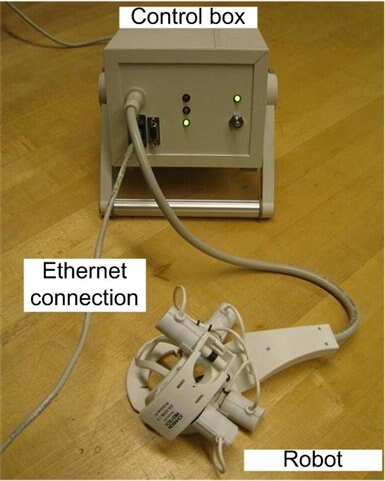Biopsy assisting robot (via MIT)
Having a biopsy done for examination of ‘suspicious’ tissue is certainly no fun for the patient or the doctor. Medical researchers from MIT are looking to, at least, make the process a little more easier (and cheaper) with their ‘minimally-invasive’ robotic biopsy assistant.
Taking a biopsy (depending on what type) usually involves CT scans of the area and using a precisely-guided needle to take a tissue sample, which is then chemically analyzed under a microscope. The difficulty associated with this procedure revolves around getting the needle precisely ‘on-target,’ which often involves multiple CT scans in order to get needle/probe placement in the correct area. This is where MIT’s Robopsy shines, as their robotic assistant design features 4 DC MICROMO micro-motors that articulate two half-concentric disposable plastic rails to accurately position a biopsy needle for insertion. Once the precise position is reached (using open-sourced cross-platform Medical Imaging Interaction Toolkit software) the doctor then instructs the robot to insert the needle or probe based off of predetermined coordinates (including depth), as well as imaging data.
Before the biopsy begins, the doctor takes a pre-procedure scan of the target area to determine the path the probe will take before the Robopsy is affixed to the patient. The doctor then takes a second scan, which ‘tells’ the MIKT software where to position the needle and what depth is needed to take a tissue sample. A third scan is taken for ‘final angular adjustments’ before the needle is inserted with a fourth, and final, scan confirming that needle is in place. The researchers tested the Robopsy robot using a simulated version of a human lung they created using a tub of ballistic gelatin (typically used to test bullet physics), which has a consistency similar to human tissue, with implanted ‘targets’ and plastic rods that were used to simulate human ribs. The team was successful in achieving 1-degree of accuracy when targeting a lesion of only 1 centimeter, which is incredible given that only a few scans were needed to accurately take the biopsy (over the typical 10 needed to do so by hand).
It’s the hope of the researchers to heighten the degree of accuracy. To be able to target suspicious tissue at only 0.5 centimeters which would enable doctors to take samples of different areas of the tissue. While having a biopsy done is certainly not pleasurable to say the least, using the Robopsy will truncate the time it takes to have it done. Every second saved is a glorious one.
Cabe

